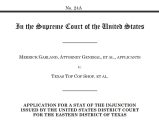
The Corporate Transparency Act mandates immediate disclosure requirements for U.S. businesses, which could lead to substantial penalties if ignored. Business owners need to understand these changes to ensure compliance and avoid potential fines or legal issues.
by LawInc Staff
June 1, 2024
A bombshell new law called the Corporate Transparency Act (CTA) now requires millions of U.S. companies to disclose previously private information about their owners to the federal government. Failing to comply can lead to huge civil penalties and even jail time, so it’s crucial that business owners understand their new obligations and take steps immediately to meet the quickly approaching deadlines.
This guide breaks down everything you need to know about the CTA, including who must file, what information to report, upcoming compliance dates, and steep penalties for non-compliance. Learn how to assess if your business needs to take action under this game-changing new law and specific steps to get in compliance to avoid fines and legal jeopardy.
From determining if you qualify for any exemptions to gathering required information, appointing a “company applicant”, filing initial and updated reports, and more, arm yourself with a thorough understanding of the CTA provisions so you can keep your business on the right side of the law.
1. Understand the New Reporting Requirements
-
- Companies Required to File: Corporations, LLCs, and other entities formed or registered to do business in the U.S., with some exemptions.
- Beneficial Ownership Information: Must report each individual who owns or controls 25% or more of the company.
- Applicant Information: Name, DOB, address, and ID number of individual who files formation/registration documents.
- Timing of Reports: File the initial report within 90 days of formation/registration if your company is formed in 2024. For companies formed in 2025 or later, the initial report must be filed within 30 days of formation. Subsequent updates must be filed within 30 days of any changes.
- FinCEN ID Numbers: Upon filing, companies will receive a unique FinCEN identifier number to provide in future reports.
Examples:
-
- ABC Corp, a Delaware company, realized they now must file beneficial ownership information for their majority shareholder and CEO.
- 123 LLC identified that two members each own 30%, so they need to report both of those individual’s personal information.
- The law firm that incorporated XYZ Inc. will be listed as the “applicant” and must provide details on the attorney who filed the paperwork.
- After its initial filing, when MNO Corp issues new shares giving a private equity fund 25% ownership, they must file an updated report.
- In future filings or contracts, companies may be asked for their FinCEN ID to verify they are meeting the CTA obligations.
How to Proceed:
-
- Review your company formation documents and ownership records to determine if you are likely required to file under the CTA.
- Make a list of all individual owners with 25%+ equity stakes, collecting required personal information like addresses and ID numbers.
- Identify and collect relevant information on the company “applicant” – the individual who filed incorporation/registration documents.
- Calendar deadlines to file the initial report within 90 days of formation for companies established in 2024, and within 30 days for those established from 2025 onwards. Regularly check for any reportable changes.
- Set up system to securely store FinCEN ID and provide it when required once you receive it back after initial filing.
FAQs:
-
- Are small businesses exempt from the CTA? Generally no – the law applies to companies of all sizes, unless they meet specific exemptions.
- What if I don’t know a beneficial owner’s information? You must take reasonable steps to obtain it or you can face penalties.
- Do I have to refile if nothing changes? No, only changes to previously reported information require an update within 30 days.
- Will company ownership information be public? No, the data is held by FinCEN and shared only with authorized agencies under limited circumstances.
- Can I just ignore these new requirements? Not advisable, as willful failure to comply can lead to civil fines up to $10,000 and criminal penalties up to 2 years in prison.
2. Determine If Any Exemptions Apply
-
- Heavily Regulated Companies: Banks, credit unions, investment advisers, brokers, insurance, and accounting firms may be exempt.
- Tax-Exempt Entities: 501(c) organizations, political organizations, and 527(a) funds are exempt.
- Large Operating Companies: Those with 20+ U.S. employees, $5M+ in annual gross receipts, and a physical office may not need to file.
- Publicly Traded Companies: Issuers of securities registered under Section 12 or required to file under Section 15(d) of the Exchange Act are exempt.
- Dormant Companies: Entities in existence over 1 year with no active business, assets, or ownership changes may qualify for reduced reporting.
Examples:
-
- 1st Bank filed an exemption form pointing to their FDIC-insured status to avoid needing to comply with the full CTA requirements.
- Charity Group checked that the CTA does not apply to them, as a 501(c)(3) tax-exempt nonprofit organization.
- Local Retailer confirmed they meet the active business exemption with 30 employees, a storefront, and $8M in annual revenue.
- Mega Corp reviewed its SEC filings to verify it is not subject to the CTA due to being a publicly traded company on the NYSE.
- Old LLC realized it could use the inactive business exemption while it explores potential reactivation or dissolution options.
How to Proceed:
-
- Review the full list of exemptions on the FinCEN website to check if your company clearly falls into any of the categories.
- Gather documentation to support qualification for an exemption, like tax forms, SEC reports, payroll records, or financial statements.
- Have company leadership discuss internally or with counsel to confirm if an exemption would remove all or part of the CTA obligations.
- If an exemption applies, determine any simplified reporting requirement that may still be required and calendar relevant deadlines.
- Monitor company changes that could alter exempt status in the future, such as going from inactive to active, going public, or going under 20 employees.
FAQs:
-
- What if my company’s exemption status changes? You must file a report within 30 days of a change that causes loss of exempt status.
- Can subsidiaries of exempt companies also be exempt? Generally, subsidiaries fully owned by an exempt entity are eligible for exemptions. However, it is advisable to verify specific rules and conditions to confirm this status.
- Are any foreign companies exempt? Those that do not register to do business in the U.S. do not need to report under the CTA.
- How do I prove my company is exempt? FinCEN will provide reporting forms to certify exemptions but may require backup records.
- Can I be exempt from disclosing owner info but not applicant info? Generally no – most exemptions are from the CTA entirely.
3. Identify & Collect Required Information
-
- Beneficial Owners: Full legal name, date of birth, current residential/business address, and unique ID number from passport, license, or other document.
- Company Applicants: Same details as beneficial owners for the individual primarily responsible for directing/controlling filing of formation/registration documents.
- Entity Details: Full legal name of company, “doing business as” names, jurisdiction of formation/registration, and an IRS TIN or Dun & Bradstreet DUNS number.
- Supporting Documents: Copies of documents like passports, licenses, or formation filings may be required to verify reported information.
- Electronic Filing: CTA reports are submitted through FinCEN’s Bank Secrecy Act (BSA) E-Filing System, so you need to register for an account.
Examples:
-
- For each 25%+ owner, Info LLC gathered full name, DOB, home address, and passport/license numbers and expiration dates.
- Ask Inc. appointed its external lawyer as applicant and collected his details, as he handled the incorporation filings.
- Co Corp pulled its legal name, state of incorporation, and EIN to include those core identifying details in its report.
- Record LP made copies of each reported person’s passport photo page in case FinCEN asks for verification later.
- Biz Inc registered an account on the BSA E-File System well in advance of the filing deadline in case of any access issues.
How to Proceed:
-
- Make a spreadsheet of all current 25%+ beneficial owners and applicants, with columns for each required data point you need to gather.
- Reach out to each individual to request the details, explaining the CTA mandate and consequences of non-compliance.
- Collect hard copies or scans of identifying documents like passports for your records in case of audit or request for proof.
- Have all information flow to a secure central point, like a law firm or authorized employee, to minimize privacy and security risks.
- Set calendar reminders ahead of reporting deadlines to check for any personnel or information changes that need to be included.
FAQs:
-
- What if an owner refuses to provide info? The company has an obligation to attempt to get it and owners can face penalties for non-compliance.
- How is “applicant” determined? The individual with primary responsibility for directing or controlling the filing of the formation documents.
- Can I collect this data when onboarding new owners? Yes, gathering CTA details should become part of standard new hire and investor processes.
- How long do I need to retain CTA records? 5 years from when an individual is reported, even if they are subsequently removed in an update filing.
- Are TINs or DUNS numbers required? Companies must provide them if they have been issued one, but they are not mandated to obtain them just for CTA filings.
4. Appoint a Company “Applicant” to Handle Filings
-
- Individual with Filing Responsibilities: Person who directly files or directs the filing of formation/incorporation documents.
- Common Options: Paralegal at law firm handling formation, internal officer or director, outside registered agent service.
- Responsible for Initial & Updated Reports: Applicant must attest to accuracy of information filed and handle ongoing CTA obligations.
- Potential Liability: Applicants can face civil & criminal exposure for willful failure to report completely & accurately.
- Cooperation is Key: Applicants must obtain required information from company officials and beneficial owners to meet reporting duties.
Examples:
-
- File Co. designated its corporate secretary as the applicant, since she worked with their law firm to handle the initial LLC filing.
- When Law Firm LLP filed incorporation papers for Startup Inc., the partner in charge of the matter was named as applicant.
- Corp Co. contracted with a professional registered agent service to be its applicant and manage all CTA reporting requirements.
- Applicant LLC’s president agreed to take on applicant role herself as she was most knowledgeable about ownership and corporate structure.
- Liability Concern Inc. worked with its attorneys to understand the potential exposure of serving as an applicant before naming one.
How to Proceed:
-
- Review incorporation documents and discuss with counsel to identify the individual who handled the filings and meets the applicant definition.
- Consider if the default applicant is best positioned to take on CTA obligations or if another individual or outside firm would be better suited.
- Discuss the role and responsibilities with the selected applicant, including the importance of timely filings and potential penalties for non-compliance.
- Establish secure communication channels for the applicant to collect required data from company owners, officers and beneficial owners.
- Implement clear processes for applicant to stay apprised of any reportable changes and to update company point of contact if applicant leaves their position.
FAQs:
-
- Can a company have multiple applicants? No, the CTA requires identifying a single individual even if multiple people were involved in the filings.
- What if the applicant is uncooperative? The company is ultimately responsible for compliance and must appoint a new applicant if the initial one won’t fulfill the role.
- Can the applicant be changed? Yes, with proper documentation of the change and timely updating of the relevant information with FinCEN.
- Does the applicant have to be a US citizen? No, but they must have a US physical address to receive notices and service of process.
- What if I don’t know who filed my formation docs? The company must undertake a good faith effort to identify the individual, with failure to do so potentially triggering penalties.
5. File Initial & Updated Reports On Time
-
- Initial Report Timing: Companies formed before 1/1/24 have until 1/1/25 to file. Those formed after 1/1/24 must file within 90 calendar days. Those formed after 1/1/25 must file within 30 calendar days.
- Electronic Filing Required: All BOI reports must be filed electronically with FinCEN – no paper filings permitted.
- Accuracy is Critical: Review & confirm data before submitting, as inaccurate filings can lead to penalties.
- Changes Trigger Updates: New reports must be filed within 30 days of any change to previously reported information.
- Retain Documents for 5 Years: Supporting records and information must be kept for 5 years from the date a person is reported.
Examples:
-
- Since Exist Co. was formed in 2020, they calendar the 1/1/25 final deadline for initial filing while gathering all required information.
- New Corp, if incorporated in 2024, understands the requirement to file within 90 days of formation and aims to submit the report promptly. For companies incorporated in 2025, the report must be filed within 30 days of formation.
- Typo LLC’s applicant catches that the CFO’s birthdate was entered wrong before filing and corrects it to avoid an inaccurate report.
- Change Inc. sets quarterly reminders to check for major ownership or management changes that would necessitate an updated CTA filing.
- Record Corp establishes a policy to save all CTA filing confirmations, along with supporting ownership and ID documents, in a secure directory.
How to Proceed:
-
- Calendar key reporting deadlines for your company based on formation date, then set reminders at least 30 days ahead of each.
- Establish an account on the BSA E-Filing System well ahead of your deadline in case of technical issues or questions.
- Have the applicant and at least one other individual review the report before filing to check for errors or omissions that need correcting.
- Implement a quarterly process to assess any changes to previous filings and submit required updates within 30 days.
- Save final versions of filings and supporting documents in a secure system, tracking when the 5-year retention period ends for each.
FAQs:
-
- What happens if I miss my filing deadline? FinCEN can impose civil penalties if non-compliance persists after warning notices.
- Do I get a confirmation when a filing is accepted? Yes, you should receive electronic notice with a unique identifier for that report.
- Can I make corrections to a report after filing? Yes, if you catch an error you should file an amendment as soon as possible.
- Will FinCen notify me when an update is due? No, companies are solely responsible for tracking reportable changes and filing necessary updates.
- What if I don’t have a beneficial owner to report? In the rare case a company truly has no 25% owners, it can report that no BOI needs to be filed.
Summary

The CTA mandates privately held companies to disclose beneficial ownership and applicant information to FinCEN starting in 2024. Failing to meet these new federal reporting requirements can lead to substantial civil and criminal penalties.
The Corporate Transparency Act significantly expands federal reporting mandates for small businesses and privately held companies. Understanding if the law applies to your company and how to comply is essential for avoiding costly fines and even potential jail time.
Determine if you must file or are exempt, gather required personal information on beneficial owners and applicants, identify a company applicant to handle submissions, and put systems in place to meet reporting deadlines. When in doubt, consult a lawyer well-versed in these new regulations for guidance.
Need Help Navigating the CTA? Call for a Consultation.
If your company needs assistance understanding and meeting its Corporate Transparency Act obligations, reach out to an experienced business attorney. A knowledgeable lawyer can assess how the CTA applies to your specific situation, guide you on compliance, and discuss any alternative entity structuring options to legally minimize reporting burdens.
Test Your CTA Knowledge
Questions: CTA Basics & Applicability
-
- 1. Which of the following companies must file under the CTA?
- A) Publicly traded companies
- B) Most LLCs and corporations
- C) 501(c) non-profit organizations
- D) Foreign companies without US operations
- 2. What is the minimum beneficial ownership percentage that triggers a reporting requirement?
- A) 10%
- B) 25%
- C) 51%
- D) 75%
- 3. Which government agency is responsible for collecting CTA reports?
- A) IRS
- B) SEC
- C) FinCEN
- D) FTC
- 4. Which of these would qualify a company for the large operating company exemption?
- A) 20+ US employees
- B) $5M+ in annual gross revenue
- C) US physical office
- D) All of the above
- 5. What is the primary purpose of the CTA’s reporting requirements?
- A) Increase tax revenue
- B) Deter terrorism financing & money laundering
- C) Publicize owner personal information
- D) Eliminate shell companies entirely
- 1. Which of the following companies must file under the CTA?
Answers: CTA Basics & Applicability
-
- 1. B) The CTA applies broadly to corporations, LLCs and similar entities, with limited exemptions for public companies, non-profits, and some others.
- 2. B) Individuals who own or control 25% or more of a company are considered beneficial owners subject to reporting.
- 3. C) The Treasury Department’s Financial Crimes Enforcement Network (FinCEN) is charged with implementing the CTA.
- 4. D) Companies meeting all three thresholds – 20+ employees, $5M+ annual revenue, and a US physical presence – are exempt from BOI reporting.
- 5. B) The CTA aims to prevent bad actors from using anonymous shell companies to hide illicit activities.
Questions: CTA Compliance & Reporting
-
- 1. When must existing companies formed before 2024 file their initial CTA report?
- A) January 1, 2024
- B) January 1, 2025
- C) December 31, 2025
- D) January 1, 2026
- 2. How long does a company have to file an updated report after a change in previously reported information?
- A) 14 calendar days
- B) 30 calendar days
- C) 60 calendar days
- D) 1 year
- 3. What information must be reported for each beneficial owner?
- A) Full legal name
- B) Date of birth
- C) Current address & unique identifier number
- D) All of the above
- 4. What is the maximum civil penalty for willful failure to file a required CTA report?
- A) $500
- B) $10,000
- C) $250,000
- D) Unlimited
- 5. How long must a company retain supporting documents submitted with a CTA filing?
- A) 1 year from filing date
- B) 2 years from filing date
- C) 5 years from filing date
- D) Indefinitely
- 1. When must existing companies formed before 2024 file their initial CTA report?
Answers: CTA Compliance & Reporting
-
- 1. B) Companies formed before 1/1/24 have a 1-year grace period until 1/1/25 to file their first BOI reports.
- 2. B) Updated reports reflecting changes to previously filed information are due within 30 calendar days.
- 3. D) Beneficial owners must report their full name, birthdate, address, and an identification number from an approved document.
- 4. B) Willful failure to properly report can lead to a civil penalty of up to $10,000, as well as potential criminal fines and imprisonment.
- 5. C) Companies must retain supporting documents for reported information for 5 years from the filing date.
Disclaimer
The legal information provided in this article discussing the Corporate Transparency Act’s beneficial ownership reporting requirements is for general educational purposes only. It is not intended as legal advice for any specific company’s situation and does not create an attorney-client relationship.
Laws and regulations change frequently, and their application can vary widely based upon the specific facts and jurisdiction involved. For up-to-date guidance on your company’s CTA obligations and reporting requirements, please consult an experienced business attorney in your state.
Related Articles
Corporate Transparency Act 2024: Essential Guide to Beneficial Ownership Reporting











